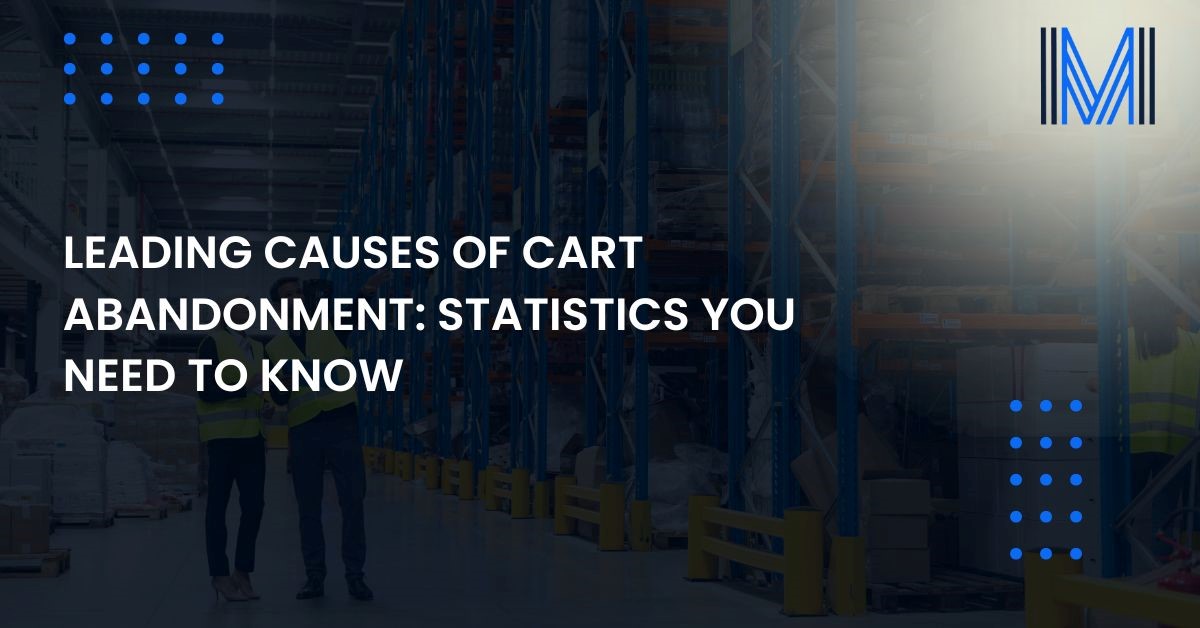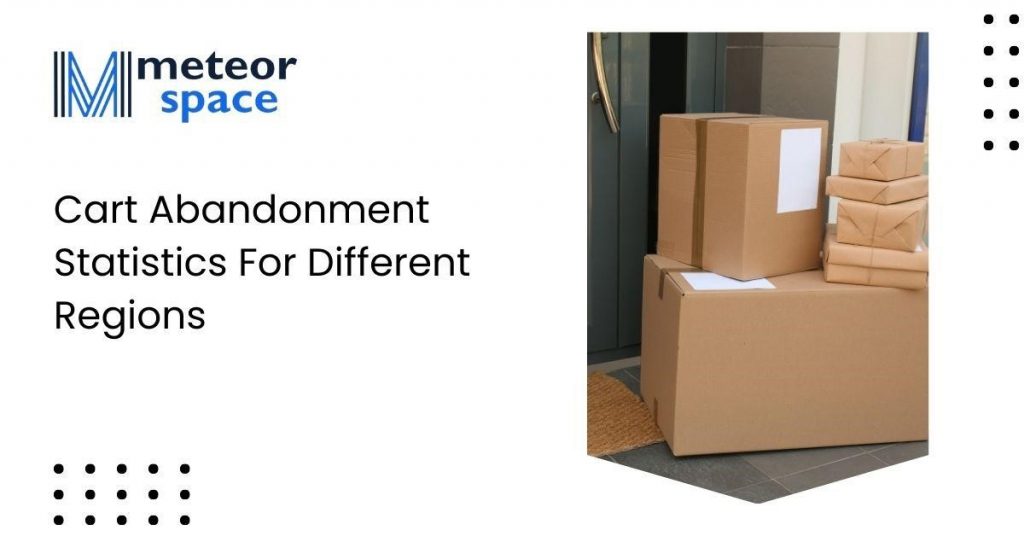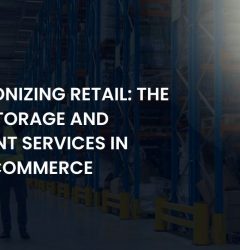04 Nov

Have you ever wondered why your customers leave items in their shopping carts without completing their purchases? Understanding cart abandonment is crucial for creating a better online shopping experience. Cart abandonment occurs when customers add items to their online carts but leave the site before completing the checkout process.
In today’s ecommerce landscape, cart abandonment is a prevalent issue, with significant percentages of customers not following through on their orders. According to recent statistics, the average cart abandonment rate in 2023 stands at a staggering 69.99% (Baymard Institute, 2023). As the number of ecommerce businesses grows, so does the frequency of abandoned carts. Identifying the leading causes of cart abandonment can help improve the experience you offer customers, ultimately reducing abandonment rates.
The Impact of Cart Abandonment on Your Business
If your online store is facing high cart abandonment rates, it’s essential to stay informed about the latest statistics and trends to lower this rate. Being aware of the issues customers encounter during their shopping experience allows you to enhance their journey and boost sales.
Research shows that addressing the causes of cart abandonment can help you create a better shopping experience, increase revenue, and demonstrate to your customers that you care about their needs. Following up with customers who abandon their carts, such as sending reminder emails, can encourage them to return and finalize their purchases.
Key Cart Abandonment Statistics
1. Average Cart Abandonment Rates:
- The average cart abandonment rate in 2023 is 69.99% (Baymard Institute, 2023). This figure highlights the ongoing challenge faced by ecommerce businesses and underscores the need for effective strategies to combat abandonment.
- Mobile devices experience the highest cart abandonment rate at 85.65% (Baymard Institute, 2023). Many consumers feel more secure shopping from desktops or laptops, contributing to the higher mobile rates.
- Desktop users have a lower average cart abandonment rate of 69.75% (Baymard Institute, 2023), indicating that many users who browse on desktops are likely to complete their purchases.
- Tablet users show an abandonment rate of 80.74% (Baymard Institute, 2023), reflecting a trend where tablet usage is popular but not as effective in completing sales as desktops.
2. Effects of Abandonment on Revenue:
- Ecommerce businesses lose an estimated $18 billion in sales revenue each year due to cart abandonment (Dynamic Yield, 2023). This staggering amount emphasizes the importance of addressing cart abandonment to protect revenue.
3. Follow-Up Strategies:
- Over 40% of cart abandonment emails are opened (Moosend, 2023). By sending follow-up emails to remind customers about their abandoned carts, you can significantly enhance your chances of recovering lost sales.
- Additionally, research indicates that 50% of users who click on cart abandonment emails will proceed to purchase the items in their carts (Moosend, 2023). Personalizing these emails makes customers feel valued and increases the likelihood of conversions.
4. Checkout Optimization:
Optimizing the checkout process can lead to a 35.62% increase in conversions (Baymard Institute, 2023). A simple and straightforward checkout process reduces the risk of abandonment, making it essential for online retailers to streamline their procedures.
Cart Abandonment Causes Statistics
- Shipping-related reasons account for over 60% of carts being abandoned (Moosend, 2023). As an online business, it is crucial that you offer top-notch shipping solutions for your customers. Your ecommerce store should understand the importance of shipping and delivery and how the services you offer can have a direct impact on the sales you make. If your shipping charges are too high or the delivery takes too long, the cart abandonment rates for your online store will increase.
- 49% of people abandon their shopping cart because extra costs at checkout were too high (Shopify, 2023). The extra costs at checkout are one of the major reasons why so many carts are abandoned before completing the purchase. Customers often don’t finalize their checkout process because the tax, VAT, or shipping charges can combine to create a higher total than they expect or can afford. As an online business, you can do your best to offer affordable or free shipping to ensure your customers are not faced with high extra costs right before checking out from your online store.
- 24% of people abandon their online shopping cart because the site required them to create an account (Shopify, 2023). Many customers do not want to create an account just to purchase something from an online store. If your ecommerce website mandates that customers create a new account before checking out, there is a high chance that they will abandon their cart and shop from a competitor that does not have such requirements.
- 18% of people abandon their shopping cart due to a long and complicated checkout process (Shopify, 2023). The checkout process for your online store should be simple and quick. If your customers face a complicated checkout process—like creating an account or filling in a lot of details—they are more likely to abandon their shopping cart. Keeping the checkout process as minimal as possible is essential.
- 17% of people abandon their online shopping carts because they don’t trust the site with their credit card information (Shopify, 2023). When you run an online business, it is vital that you have your customers’ trust. If they can’t trust your store, they will hesitate before entering their personal information to make a purchase. Ensuring that your online store’s checkout page connection is safe and secure is crucial for building that trust.
- 17% of shoppers abandon their cart because they couldn’t calculate the total order cost up-front (Shopify, 2023). As an ecommerce store, you should let your customers know the total cost before they click on the checkout button. Your website should have a visible counter that displays their current total as they add items to their shopping carts. Not being able to calculate the cost can lead customers to abandon their shopping carts once they access the checkout page.
- 12% of shoppers abandon their cart because the return policy wasn’t satisfactory (Baymard, 2023). When you run an online business, you need to have a solid yet lenient returns policy in place. A high percentage of customers abandon their shopping carts after reviewing your returns policy. When purchasing items online, customers want to be able to return items without hassle. Since the first time they interact with the product is after delivery, having a customer-friendly return policy can help lower your cart abandonment rate.
- 13% of people abandon their cart because the website crashed or had errors (Baymard, 2023). As an online store, it’s essential to ensure that your website is fast and runs smoothly. If your site crashes frequently or is slow, potential customers will abandon their carts instead of checking out. Shoppers are unlikely to provide personal information if they perceive your website as unreliable.
- 9% of online shoppers abandon their cart due to a lack of available payment methods (Baymard, 2023). As an online store or ecommerce business, you should offer multiple payment methods to facilitate customer purchases and keep your cart abandonment rate low. If customers cannot find a suitable payment option during checkout, they will likely abandon their cart and shop from a competitor that offers more payment methods.
- 4% of people abandon their cart because their credit card is declined (Baymard, 2023). This is the lowest percentage of abandonment due to payment issues. If everything else on your online store is well-executed and the checkout process is simple, shoppers are more likely to try another payment method rather than abandoning their shopping cart altogether. Ensuring a seamless shopping experience is vital for retaining customers.
Cart Abandonment Statistics For Different Regions

- 17% of U.S. online shoppers have abandoned an order in the past quarter solely due to a too long or complicated checkout process (Baymard, 2023). Just like everywhere else in the world, online shoppers in the U.S. do not want to deal with lengthy and complicated checkout processes. Online stores that implement simple checkout methods are more likely to experience lower cart abandonment rates.
- 31% of UK shoppers purchased their abandoned cart items at a later time from the same website (Shopify, 2023). Online shoppers in the UK are more likely to return to your store to purchase the items they previously abandoned. However, you can further increase these numbers by retargeting your customers using ads and emails to draw them back to your store.
- 26% of UK online shoppers bought the items they abandoned from a different online store (Shopify, 2023). It’s crucial to recognize that UK online shoppers are likely to abandon their carts in your store and subsequently make the same purchase at a competitor’s website. As an ecommerce business in the UK, it’s essential to create the best customer experience, especially during checkout, to ensure that your customers remain loyal and do not turn to competitors.
- 8% of UK shoppers went into physical stores to purchase the items they abandoned online (Shopify, 2023). Although the percentage of shoppers who choose to make purchases in physical stores after abandoning their carts online is low, it is still significant. As an online business, your checkout process should be straightforward, and delivery charges should be reasonable, preventing customers from abandoning their carts to shop in physical stores instead.
- 86.15% of Spanish shopping baskets are abandoned midway through the shopping process (Shopify, 2023). Online businesses in Spain need to enhance the customer experience on their ecommerce websites to reduce cart abandonment rates, especially halfway through the purchase process.
- Online shoppers in the Netherlands have the lowest abandonment rate at 65.49% (Shopify, 2023). This indicates that online shoppers in the Netherlands are less likely to abandon their shopping carts compared to other regions. The average cart abandonment rate for the Netherlands is the lowest globally, reflecting that businesses in this country are succeeding in creating a simple checkout process and delivering an excellent online shopping experience for their customers.
Cart Abandonment Statistics For Different Industries
- The average shopping cart abandonment rate for fashion and clothing is 68.3% (Bolt, 2023). The high cart abandonment rate in this sector can be attributed to various factors. Customers often find it difficult to choose clothing and fashion items online, and unexpected extra charges at checkout can significantly increase the total cost, leading to more shoppers abandoning their carts.
- The average shopping cart abandonment rate for finance stands at 83.6% (Bolt, 2023). Financial purchases can be particularly challenging online, requiring customers to navigate a lot of information, fill out multiple forms, and meet various prerequisites. This complexity often drives consumers to abandon their financial purchases, preferring the assurance of in-person transactions, resulting in the highest abandonment rate among all sectors.
- In the travel booking industry, the average shopping cart abandonment rate is 81.7% (Bolt, 2023). Planning and booking travel is a complex process that takes considerable time and effort. Customers may abandon multiple carts before finalizing their travel arrangements, contributing to the high abandonment rates in this sector.
- The average shopping cart abandonment rate for gaming is significantly lower at 64.2% (Bolt, 2023). This industry enjoys a lower abandonment rate because customers often research games thoroughly before purchasing. They check reviews, watch trailers, and evaluate whether they will enjoy the game, making them less likely to abandon their carts once they are committed to a purchase.
- For non-profits, the average shopping cart abandonment rate is 83.1% (Bolt, 2023). Donors tend to be skeptical, requiring extensive information before making contributions. To reduce cart abandonment rates, non-profits should ensure that all relevant information is readily accessible on their websites, fostering transparency and trust.
- In the retail sector, the average shopping cart abandonment rate is 72.8% (Bolt, 2023). This high rate can be attributed to many shoppers browsing products without the intention to purchase, leading to casual cart abandonment.
Do You Want to Offer Your Customers the Best Shopping Experience and Lower Your Cart Abandonment Rates?

With the cart abandonment rate steadily rising, it is clear that many customers are not receiving the experience they desire. If customers expect fast shipping and you fail to provide it, they are more likely to abandon their carts and shop from your competitors.
To combat this issue, it is crucial to ensure a seamless fulfillment process for your customers, guaranteeing they receive the best service possible. The quality of service you provide can significantly impact cart abandonment rates, helping you retain clients and enhance their shopping experience.
Partnering with a leading fulfillment company like Meteor Space allows you to offer exceptional shipping services, customized packaging, and timely order fulfillment. Our solutions enable customers to track their orders, ensuring they are always informed about their delivery status and timeline.
By leveraging our fast ecommerce shipping service, you can reduce cart abandonment rates for your online business while keeping your customers satisfied. We provide a comprehensive solution for all your ecommerce fulfillment needs, including bespoke software tailored to your business specifications.
Want to find out more about our top-notch services that can help you lower the cart abandonment rate for your ecommerce store?


